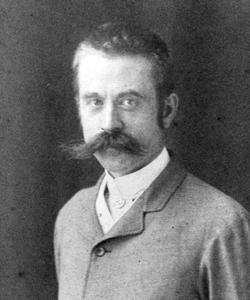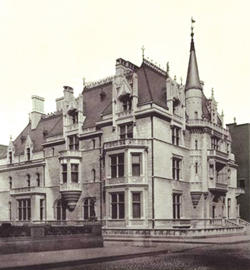Trending
This month in real estate history
This month in real estate history
1893: Hospital sale puts a value on Fifth Avenue
The $2.4 million sale of St. Luke’s Hospital 125 years ago this month was reported in The Record & Guide as the single largest real estate transaction to ever occur in the city and called into question the fate of a house-lined strip along Fifth Avenue, according to the New York Times. Although it was apparent that properties below 50th Street would be converted into offices and pricey retail, the sale of the roughly 80,000-square-foot lot left brokers to wonder what would happen to the north, where St. Luke’s stood. The hospital’s neighbors included the Vanderbilt, Huntington and Whitney family mansions, along with a Presbyterian church — all structures that were well-endowed to remain standing for “generations,” as the Times put it. The hospital’s operations moved uptown to what was the edge of the city at the time — 114th Street and Amsterdam Avenue — and the hospital is now part of the Mount Sinai West health complex. Today, St. Luke’s former location between 54th and 55th streets houses the University Club and the Peninsula Hotel.
 1906: Architect Stanford White shot by former mistress’ husband
1906: Architect Stanford White shot by former mistress’ husband
New York architect Stanford White was shot dead at the old Madison Square Garden 112 years ago this month, the New York Times reported. The crime scene was a building White designed himself and included a set of personal suites that quickly gained notoriety as the architect’s “pleasure house.” Around 11 p.m. one evening, Pittsburgh millionaire Harry Thaw shot White in the head. When authorities at the scene asked Thaw why he did it, he reportedly told them, “I did it because he ruined my wife.” White had numerous affairs with younger women, including Thaw’s wife, Evelyn Nesbit, according to author Simon Baatz’s book “The Girl on the Velvet Swing: Sex, Murder, and Madness at the Dawn of the Twentieth Century.” Nesbit was 16 when the 47-year-old architect raped her by her account, and a consensual relationship between the two continued for years after. The trial that followed is considered the first major courtroom drama in history to unfold in real time — President Theodore Roosevelt even intervened to halt the distribution of Nesbit’s account of White’s “seduction” of her on the grounds that it constituted pornography, according to The New Yorker. After two trials, Thaw, who was found not guilty due to insanity, spent time in two mental institutions before dying of a heart attack.
 1927: Vanderbilt empire divvied up post-divorce
1927: Vanderbilt empire divvied up post-divorce
Although William Vanderbilt and Virginia Fair had been separated for more than 18 years, the couple officially called it quits 91 years ago this month, according to the New York Times. As both husband and wife were millionaires, the divorce focused on the couple’s division of their New York properties and whether Fair — who had reportedly refused to divorce her husband up until then due to religious reasons — would seek an annulment of the marriage from the Catholic Church. Fair declared she would reside in a co-op at 660 Park Avenue, while Vanderbilt, it was reported, would live across the street at 651 Park Avenue. Fair retained custody of their son. She also sold her former home at 666 Fifth Avenue before the divorce was finalized. It was to be converted into an office building, and a mansion next door, which had also been owned by the Vanderbilt family, was razed. Tishman Realty and Construction built the 1.5 million-square-foot office tower 666 Fifth Avenue on the site in the 1950s, and Kushner Companies paid $1.8 billion for it in 2007.




